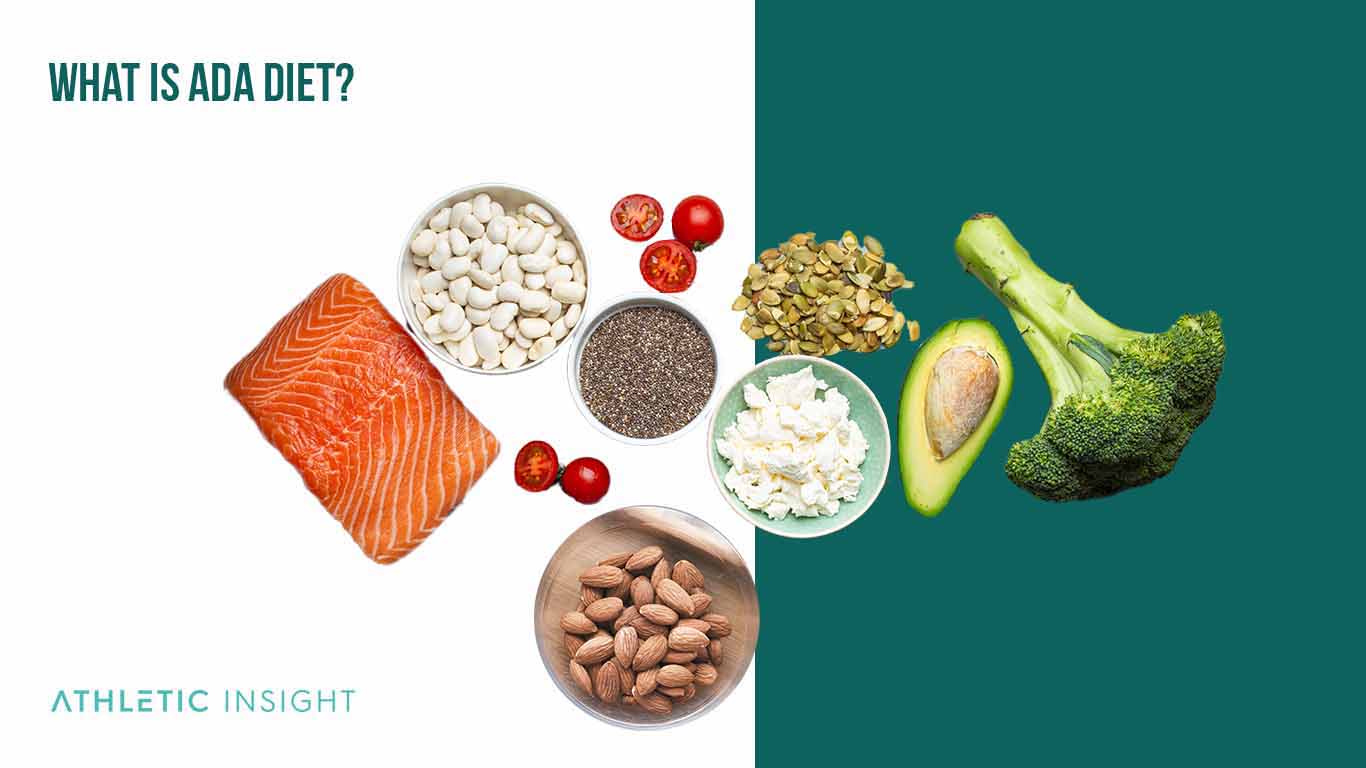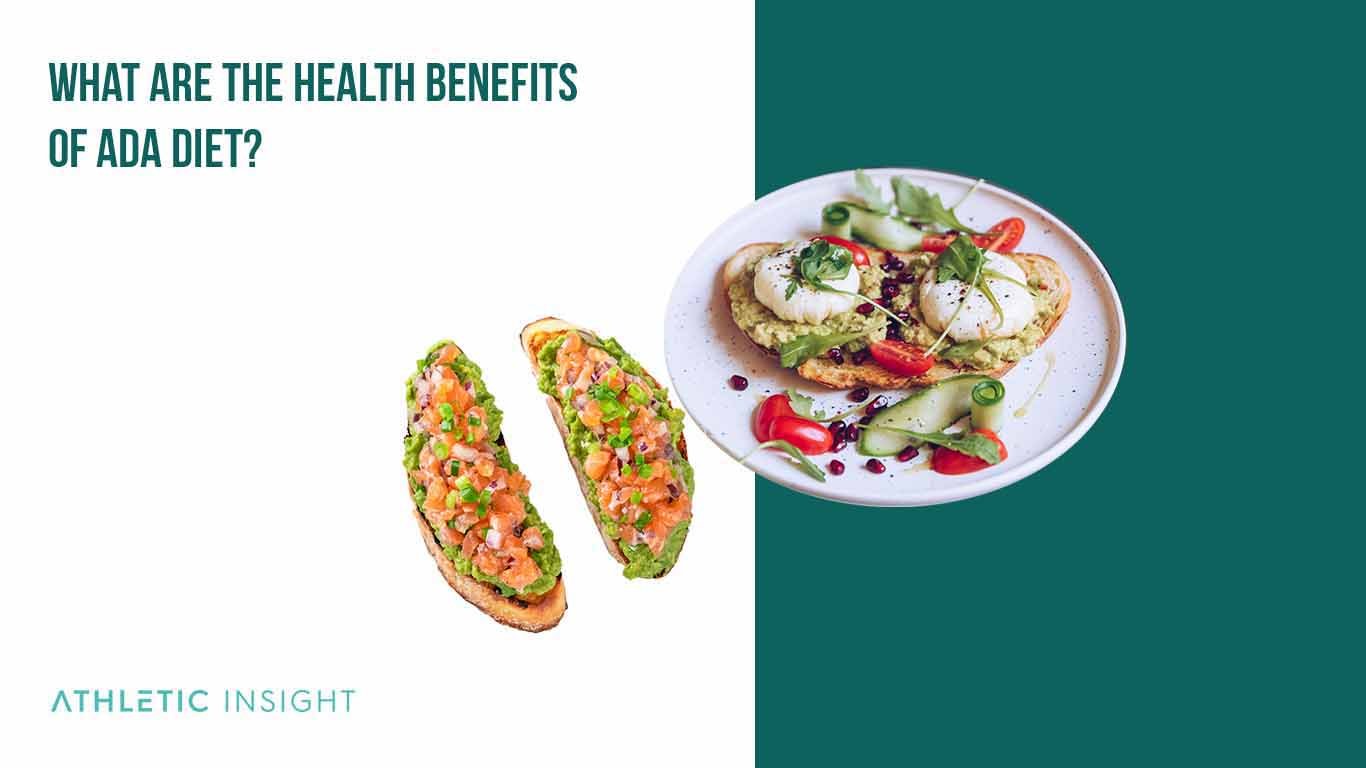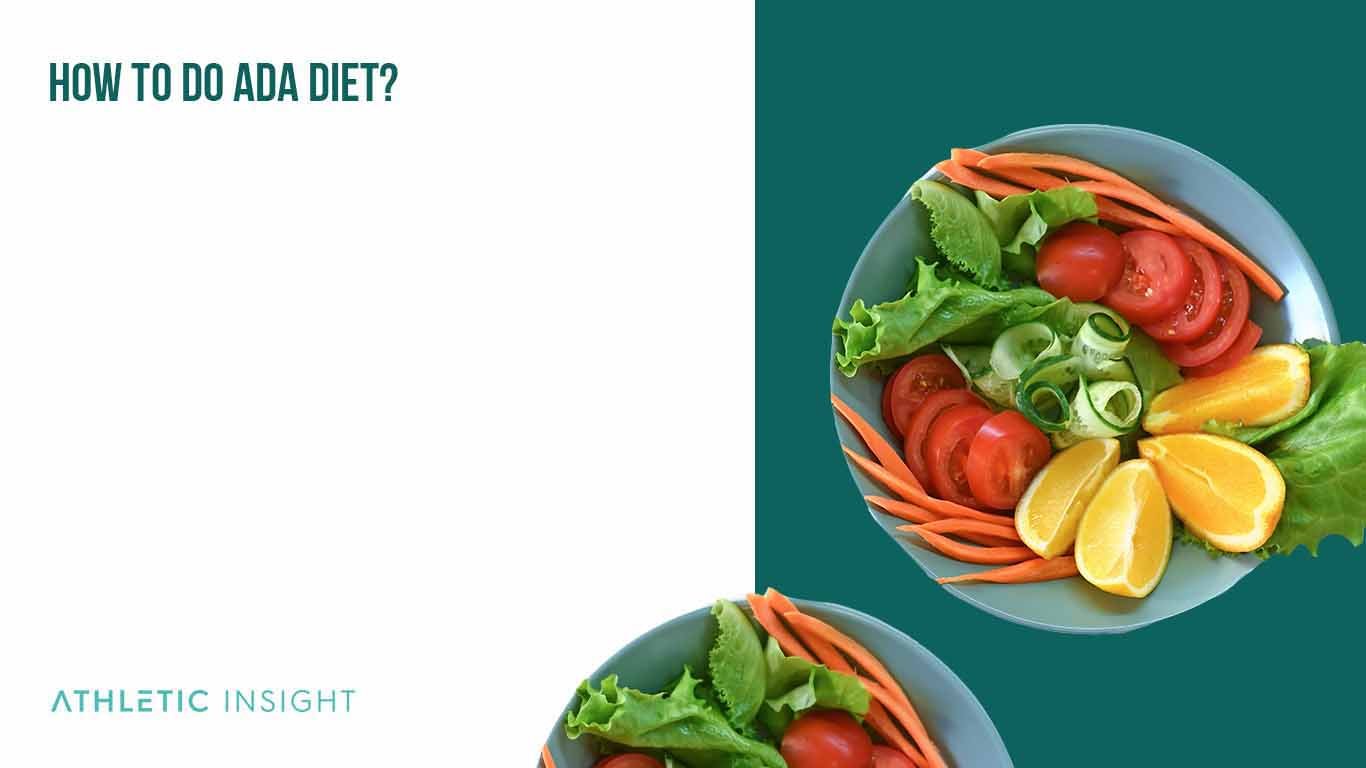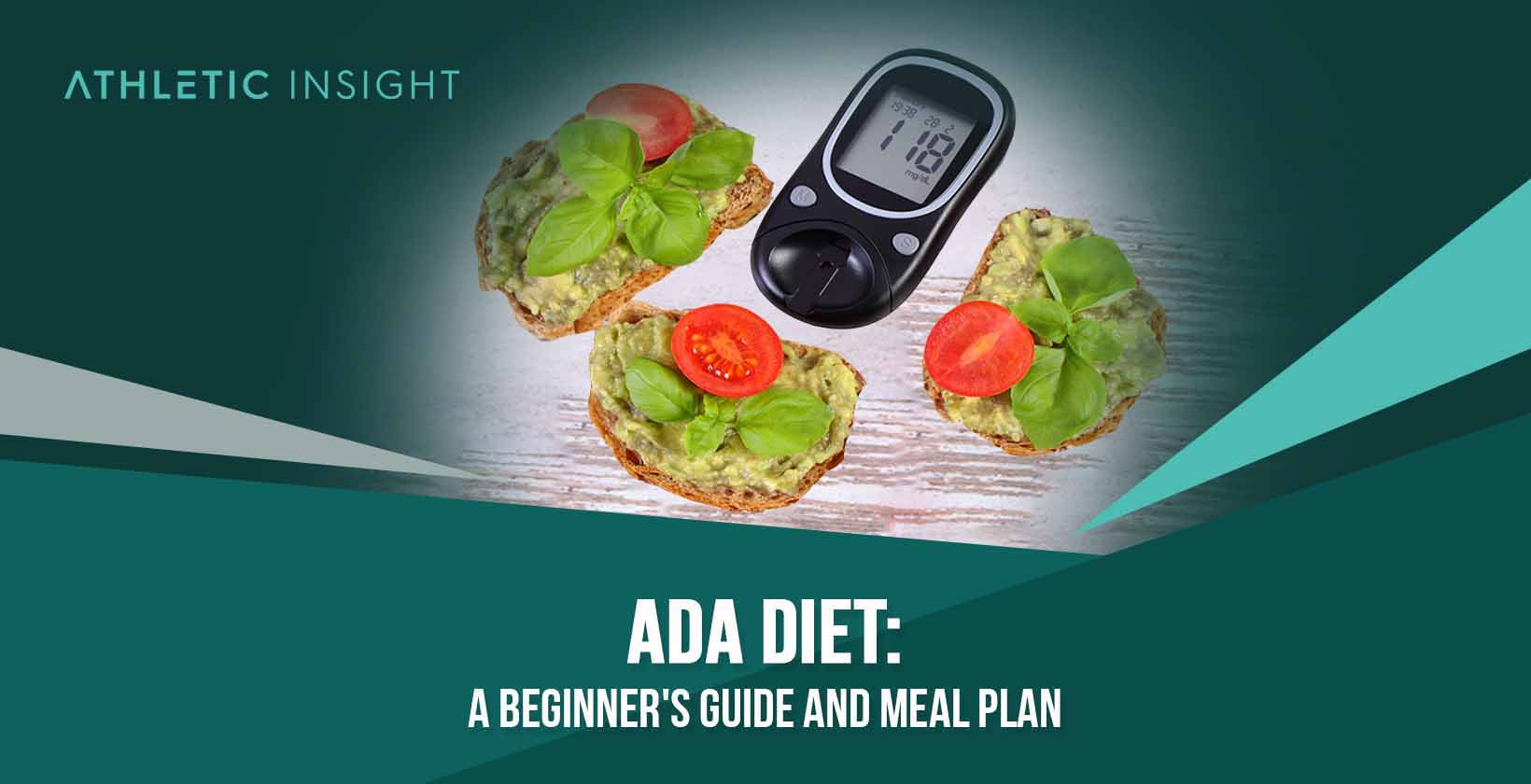The struggle to find the proper diet and health program is crucial for people who are struggling with diabetes. If you have diabetes, many traditional diets are not an option due to particular metabolic needs.
The American Diabetes Association (ADA) diet is an option for those trying to manage their diabetes while still eating healthy, nutritious meals. The ADA diet follows decades of scientific and medical research, and its purpose is to create a realistic diet that is sustainable, healthy, and enjoyable for those with diabetes or pre-diabetes.
There are many benefits to following the ADA diet, including weight control, improved blood sugar levels, and better overall health. The diet creates a balanced meal plan that meets recommended daily allowances for essential nutrients like fiber, protein, and healthy fats. The diet also includes some flexibility in meal planning, so you can still enjoy your favorite foods while ensuring they are still within ADA diet’s guidelines.
This ADA diet guide will give you an understanding of the ADA diet, what it entails, and how you can use the diet to help manage your diabetes while still eating delicious meals. It will cover the diet guidelines, meal plans, foods to avoid, diet tips and tricks, as well as a sample menu. If you’re looking to manage your diabetes while still eating healthy and delicious meals, the ADA diet can help you meet your health goals.
What Is an ADA Diet?
The ADA diet is a specific diet that the American Diabetes Association created based on current medical research and nutritional guidelines. The ADA diet is designed specifically for people who have diabetes or are at risk of diabetes, offering a way to manage their health while still eating healthy meals.

An ADA diet helps keep blood sugar levels stable and offers beneficial advice regarding which foods to include in the diet. You can change this dieting plan to meet an individual’s health needs and overall lifestyle. This diet promotes a balanced approach with flexible meal planning to help you meet your health goals.
Unlike other diets, the ADA diet is holistic and focuses on more than just food. The diet does not follow a strict plan. Instead, it gives guidelines about caloric intake and certain foods that can significantly impact people with diabetes, including fruits, fried foods, and alcohol. The diet also provides more stringent guidelines on the number of fats, processed sugars, and carbohydrates that you can consume while on a diet.
What Is the ADA Diet Medical Abbreviation?
The abbreviation, ADA, stands for the American Diabetes Association. This organization helps those with diabetes and pre-diabetes live healthier lives. The ADA is the premier organization for diabetes-related research and advocacy. This diet is the organization’s official dietary guidelines for those with or at risk of developing diabetes.
The ADA diet was created by experts in nutrition, diabetes management, and medical research. Promoting a balanced diet focusing on eating healthy foods, monitoring portion sizes, and maintaining physical activity. The diet helps those with diabetes or pre-diabetes make lifestyle changes to manage their health better and enjoy delicious meals.
How Does the ADA Diet Work?
Most other diets focus on losing weight or helping someone achieve fitness goals, but the ADA diet helps people with diabetes eat and live well without worrying about their condition negatively impacting their life.
The ADA diet focuses on a balanced meal plan, recommending eating foods high in fiber, proteins, and healthy fats while avoiding sugary and processed foods. The diet also suggests eating smaller meals.
Eating protein-rich and high-fiber foods and several small meals throughout the day makes your body more capable of normal blood sugar levels. Regulating blood sugar levels is essential for people with diabetes to manage their condition.
The ADA diet also limits salt, saturated fats, and processed sugars. This diet encourages you to eat various healthy foods and suggests limiting sugary drinks or fried food. People with diabetes must avoid large amounts of salts, saturated fats, and processed sugar because they can cause increased insulin resistance.
The ADA diet also focuses on portion control as overeating can increase their blood sugar levels. The ADA diet also recommends exercising regularly and managing stress as holistic methods for managing diabetes.
These ADA diet guidelines can guide those with diabetes to make the lifestyle changes they need to manage their condition better while still enjoying delicious meals.
When you first start the ADA diet, you will experience immediate results. Diabetics will notice that their blood sugar levels are more consistent. As a result, they may need to take fewer insulin shots.
What Are the Health Benefits of the ADA Diet?
There are several significant health benefits to the ADA diet such as steady blood sugar levels, less insulin resistance, reduced risk of cardiovascular diseases and reduced risk of cancer.

- Steady blood sugar levels: ADA diet helps to regulate blood sugar levels, which is essential for people with diabetes.
- Less insulin resistance: ADA diet limits sugary, processed foods and encourages eating healthy fats and proteins, which helps reduce insulin resistance.
- Reduces risk of cardiovascular diseases: ADA diet emphasizes eating healthy fats and proteins, which can reduce the risk of developing cardiovascular diseases.
- Reduces risk of certain cancers: ADA diet includes plenty of fruits and vegetables, which help reduce the risk of certain cancers.
What Are the Health Risks of the ADA Diet?
There are a few health risks associated with the ADA diet such as poor nutrition and fluctuating blood sugar levels.
- Poor nutrition: ADA diet focuses on eating healthy fats and proteins but doesn’t offer enough guidance for getting balanced nutrition. ADA diet can lead to nutrient deficiencies.
- Fluctuating blood sugar levels: While adjusting to the ADA diet, your blood sugar levels may fluctuate, which can cause people with diabetes to need insulin injections.
How To Do an ADA Diet?
There are several steps you can take before, during and after the ADA diet such as evaluating your goals, consulting a doctor, meal frequency, controlling portions, exercising and portion control, and making the ADA diet a lifestyle.

- Evaluate: Make sure the ADA diet is right for you as the diet is best for those with diabetes or pre-diabetes. Before starting, make sure the ADA diet fits your lifestyle and health goals.
- Consult a doctor: Before starting any major diet you should consult with an expert.
- Frequency: Eat several small meals throughout the day, focusing on protein-rich and high-fiber foods.
- Pay attention to portion sizes: Overeating can increase blood sugar levels.
- Exercise regularly and manage stress: Both exercise and managing stress are critical to managing diabetes and living a healthy lifestyle.
- Make the ADA diet a lifestyle: The ADA diet is not a quick fix; it requires dedication and effort to see results.
While on the ADA diet, you can consume between 1800-2500 calories daily. This is the average calorie recommendation for the average human; this diet does not put you on a caloric restriction.
If you have diabetes, the proposed time frame of the ADA diet is your lifetime as the ADA diet is a way of life and will help you maintain steady blood sugar levels.
Some best practices to follow while on the ADA diet include drinking plenty of water, eating fruits and vegetables daily, limiting the intake of processed foods and sugar, eating healthy fats such as nuts and avocados, and exercising regularly.
What Are the Foods That You Can Eat While on an ADA Diet?
These are some foods you can eat while on the ADA diet.
- Fruits: apples, pears, grapes
- Vegetables: green beans, salad, kale, broccoli
- Grains: quinoa, barley, brown rice, whole wheat
- Legumes: black beans, pinto beans
- Nuts: almonds, walnuts, pecans, cashews
- Seeds: sunflower, flax, sesame
- Healthy fats: cheese, olive, and canola oil
- Proteins: chicken, steak, lean meat
These foods are all essential parts of a healthy ADA-approved diet. They offer steady sources of glucose, so your blood sugar won’t spike after meals.
What Are the Foods That You Should Avoid While on an ADA Diet?
While following the ADA diet, avoiding the following foods.
- Meat: high-fat meat like pork belly
- Poultry: duck, goose, ground turkey, and poultry with skin should be eaten in moderation
- Fish and shellfish: shark, swordfish, and tilefish
- Meat-based ingredients: processed meat products, sausage, deli meat
- Eggs: eat in moderation while following a healthy diet
- Dairy products: ice cream, yogurts with added sugar, chocolate milk
You should avoid these foods while on the ADA diet because they can cause your blood sugar to spike and increase insulin resistance.
Who Should Do an ADA Diet?
The ADA diet is for people who have Type 1 or Type 2 diabetes or those at risk for developing diabetes. The design of the diet is to help people with diabetes regulate their blood sugar levels and reduce the long-term effects of diabetes. The guidelines for this diet are also beneficial for pre-diabetic people with a family history of diabetes.
The ADA diet also benefits people who don’t have diabetes and want to eat healthier and maintain a balanced diet. Some bodybuilders follow the ADA bodybuilding diet, as the diet helps keep bodybuilders nutritionally balanced and can help them lose weight before a competition.
The ADA diet offers a wide variety of health benefits for everyone. It encourages healthy eating habits, portion control, and physical activity, benefiting everyone, not just diabetes.
How Easy Is an ADA Program To Follow?
The ADA program is easy to follow because there are no tight caloric restrictions, and you can still eat most foods. The most challenging part of the diet is saying no to foods you may enjoy, like french fries or ice cream. It can be difficult to say no to these foods when you are with friends who can eat the forbidden foods.
Temptation is the hardest part of following the ADA program closely. For this reason, it may be helpful to let your friends and family know about your dietary restrictions so they can help hold you accountable and not try to tempt you into breaking the diet.
What Is a Sample ADA Diet Plan?
Included below is a sample ADA diet plan of what you should eat while following this diet.
Day 1
- Breakfast: 2 small whole-grain pancakes, one piece of fruit, two teaspoons honey
- Lunch: Chicken Soup with Vegetables, Tossed salad with two tablespoons of light salad dressing
- Dinner: 4 ounces of grilled tuna, 1/2 cup red rice, 1 cup cucumber and tomato salad with olive oil and balsamic vinegar
Day 2
- Breakfast: grapefruit, whole grain cereal with fat-free milk
- Lunch: grilled cheese sandwich with sliced tomato and fruit salad
- Dinner: flank steak with a baked sweet potato and roasted spinach
Day 3
- Breakfast: whole wheat toast with ricotta cheese, Canadian bacon, sliced fruit
- Lunch: roasted turkey with an asparagus salad and pita bread
- Dinner: baked halibut with ratatouille and couscous
Day 4
- Breakfast: fruit salad on a whole wheat pita bread
- Lunch: vegetable soup with multigrain bread and no-sugar applesauce
- Dinner: grilled pork loin chop, broccolini, and potatoes
Day 5
- Breakfast: toasted whole wheat bagel with reduced-fat cream cheese
- Lunch: roast beef on a whole wheat tortilla with salad and mustard
- Dinner: grilled chicken with couscous and squash
Day 6
- Breakfast: sugar-free oatmeal with cinnamon
- Lunch: tuna and chickpea salad
- Dinner: roasted chicken with wild rice and peppers
Day 7
- Breakfast: whole wheat muffin with fresh blueberries and fat-free milk
- Lunch: whole wheat English muffin with tomato sauce, mozzarella cheese, and low-fat pepperoni with a salad and fruit
- Dinner: grilled tuna steaks with fresh udon noodles, snowpeas, and fresh fruit sorbet
What Are the Best Recipes for ADA Diet?
Some easy-to-make and healthy recipes will help you follow the ADA diet.
- Udon noodles with stir-fried vegetables: Udon noodles and stir-fried veggies are a balanced dinner without harmful fats.
- Grilled chicken with rice: Grilled chicken and rice is a classic ADA-approved meal.
- Tuna and chickpea salad: Adding a low-fat dressing to this salad makes it the perfect lunch for avoiding a blood sugar spike.
- Sugar-free oatmeal with fresh fruit: Fresh fruit is a great way to add natural sugar to your breakfast.
- Pork loin with roasted potatoes: Pork loin is an excellent choice because it is low in fat.
What Are the Facts About the ADA Diet?
There are some crucial facts about the ADA diet that you should know, including how your body reacts to it, the effect it has on weight loss, the health benefits, famous people who follow the diet, and how long you can follow this diet.
- Your Body’s Reaction: During the first week on the ADA diet, your blood sugar levels will stabilize, and you will not feel so sluggish after meals.
- Effect on Weight Loss: The ADA diet focuses on providing healthy foods to the body and not necessarily calorie restriction. The lack of a caloric restriction means you may not see a drastic decrease in weight.
- Health Benefits: Following the ADA diet can help you reduce your risk of chronic illnesses, including heart disease and type 2 diabetes.
- Famous People Who Follow ADA: Many famous people follow the ADA diet guidelines, including Larry King, Halle Berry, Tom Hanks, and Nick Jonas.
- Length of Diet: There is no time limit on the diet, you can follow it your entire life because it is naturally low in saturated fat and cholesterol.
How Much Does the ADA Program Cost?
The ADA program costs nothing; the ADA provides it for free. However, purchasing the proper foods may cost up to $500 a month.
What Are the Alternatives to the ADA Diet?
Other diets that focus on healthy eating and weight loss include the Mediterranean Diet, the DASH diet, the Flexitarian diet, and the Ornish diet. These diets focus on eating fresh fruits and vegetables, lean proteins, whole grains, and low-fat dairy products. They are similar to the ADA, but the ADA diet is more restrictive regarding processed sugars and fats.
What Does an ADA Diet PDF Involve?
AN ADA diet PDF has all the information you need to follow the ADA diet, including sample meal plans and recipes, guidelines, and tips.
How To Find 3D Ada Diet Printable Plan?
You can find an ADA diet printable plan by visiting the ADA website.



